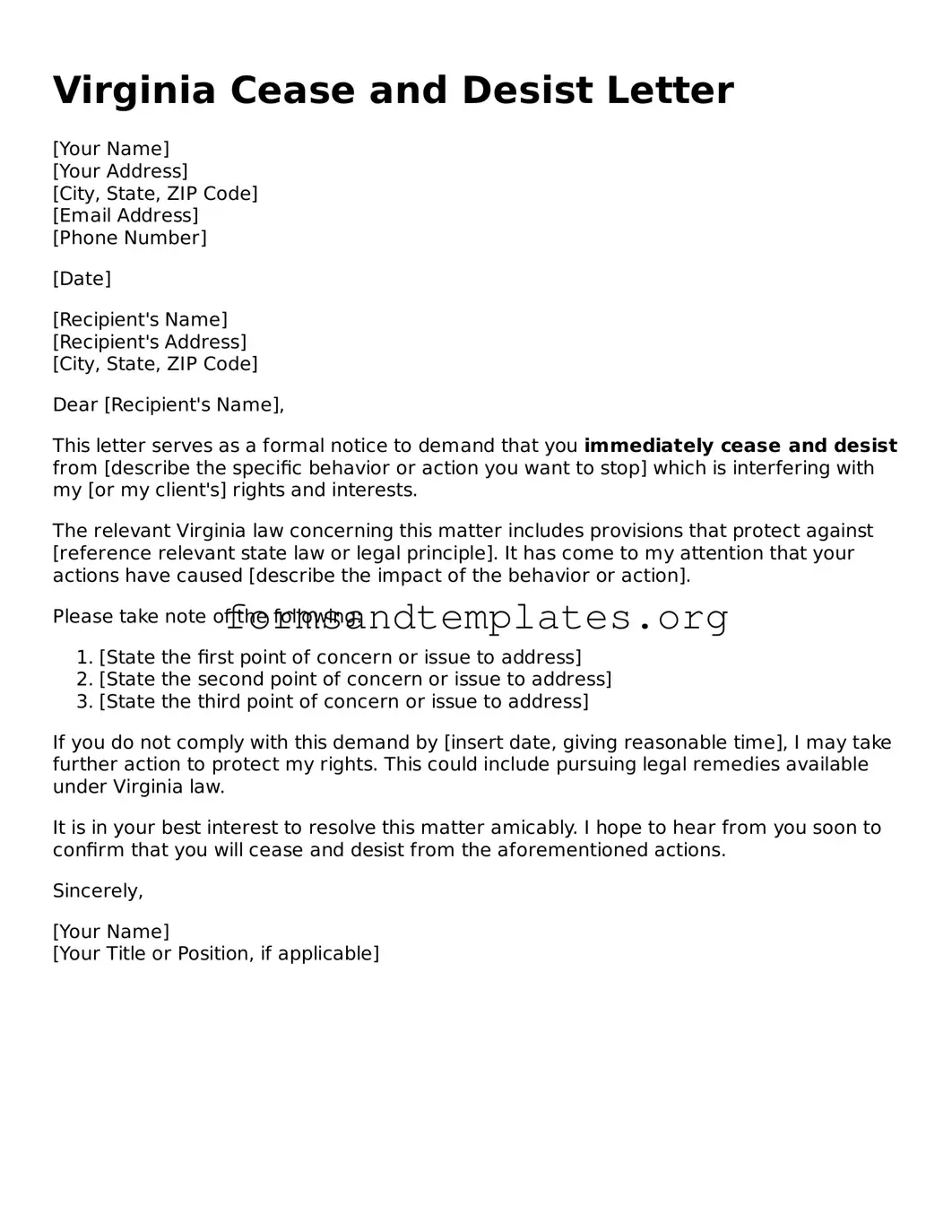Virginia Cease and Desist Letter
[Your Name]
[Your Address]
[City, State, ZIP Code]
[Email Address]
[Phone Number]
[Date]
[Recipient's Name]
[Recipient's Address]
[City, State, ZIP Code]
Dear [Recipient's Name],
This letter serves as a formal notice to demand that you immediately cease and desist from [describe the specific behavior or action you want to stop] which is interfering with my [or my client's] rights and interests.
The relevant Virginia law concerning this matter includes provisions that protect against [reference relevant state law or legal principle]. It has come to my attention that your actions have caused [describe the impact of the behavior or action].
Please take note of the following:
- [State the first point of concern or issue to address]
- [State the second point of concern or issue to address]
- [State the third point of concern or issue to address]
If you do not comply with this demand by [insert date, giving reasonable time], I may take further action to protect my rights. This could include pursuing legal remedies available under Virginia law.
It is in your best interest to resolve this matter amicably. I hope to hear from you soon to confirm that you will cease and desist from the aforementioned actions.
Sincerely,
[Your Name]
[Your Title or Position, if applicable]
